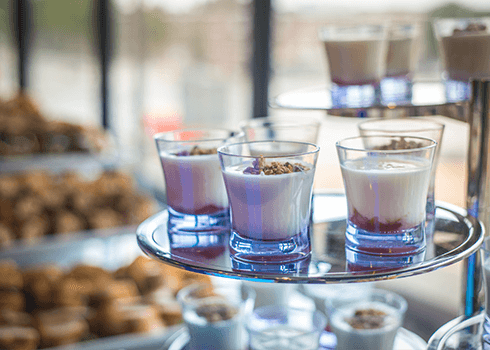
You’ve probably already experienced this at your favorite grocery store: armed with your weekly shopping list of boring but necessary household items, you find yourself detouring for the artisanal cheese display or stopping for a sample from the slow cooker chili pot.
In-store food sampling is both entertaining and informative for consumers, a chance to try before you buy. And for manufacturers and retailers, sampling is an effective tool that can be leveraged to boost sales and customer loyalty.
My co-authors, Sandeep Chandukala of Singapore Management University and Jeffrey Dotson of Brigham Young University, and I first got interested in this line of research when we noticed a proliferation of these in-store sampling events. Why did their popularity seem to be growing and were these events actually effective for retailers?

We examined in-store sampling across four distinct product categories using six different data sets taken from grocery stores that held sampling events within their stores. Our findings showed that using in-store sampling had important short and long-term effects for manufacturers and retailers.
Read on for six things to know about in-store sampling:
-
- It’s experiential. Even in an increasingly online world—or maybe because of it—customers still crave the overall sensory experience of an item: its look, taste, feel, and smell. Since sampling is free, shoppers can try the product first in a low-key environment without having to make any commitments or purchasing decisions.
- Sampling creates a loyalty you can’t achieve from in-store promotions. We found that sampling offers both an immediate and a sustaining sales increase. The benefit from in-store sampling surpasses other types of promotional activities like price discounts and product display. Sampling events introduce customers to new brands that they ideally will repurchase from the store in the future. Customer enjoyment of the sampling experience can lead to greater store sales and a higher level of loyalty to the business overall.
- Multiple in-store sampling events can have multiplicative long-term effects. Single sampling events for a store can increase sales. But multiple events held for the same product can increase sales for that product for a much longer period of time.
- Sampling of one brand could help the other brands within the same category. Let’s say that a customer samples a brand of potato chip that the store has positioned as its “focal” brand, meaning it’s highlighted in a sampling display. If the customer tries this product and loves it, our research suggests an uptick in interest and sales for the other potato chip brands the retailer currently carries, even if they are not showcased as a sample on that day. We call this the spillover effect, because it spills over to positively impact an entire category of goods.
- Sampling can benefit smaller stores with fewer selections. Given the current economic climate, smaller businesses could use a little good news. Our research found that smaller stores with less variety benefit more from in-store events than do their larger counterparts.
- It has future marketing implications. Current methods of sampling can highlight areas for further exploration, such as optimal times to hold in-store events or whether our findings are generalizable to product demonstrations where the item is viewed but not consumed. There may be other industries as well that can benefit from sampling research.
Read the paper “An Assessment of When, Where and Under What Conditions In-Store Sampling Is Most Effective” published by the Journal of Retailing.
Qing Liu is an associate professor in the Department of Marketing at the Wisconsin School of Business.
Tags: